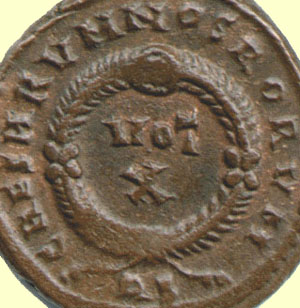 Contents -
Previous Article -
Next Article
Contents -
Previous Article -
Next Article
The study of science in classical times was done somewhat differently from the way it is today. Most modern scientists use the scientific method, in which they form an idea or hypothesis, design a controlled experiment to test the hypothesis, and record results. Ancient scientists preferred the direct observation method. They would observe a phenomenon with skill that comes from experience and write highly detailed notes about what they saw. They did not usually employ a method in which they formally tested anything. This direct observation method worked well for Galen, a Roman physician who studied the bodies of gladiators, examined their wounds, and dissected their bodies after they were killed. His text on anatomy was the best available up until the beginning of modern times. The method often gave incorrect results, because there was no real investigation of why a particular phenomenon happened. The reasoning why was often supplied by a philosopher, who came up with a reasonable explanation based on what he saw as logical or obvious.
Pliny the Elder was one such scientist and writer who had a passion for directly observing phenomena and taking notes. He had already written an important work on natural history based on his observations of the world around him. In fact, his dedication to this method was directly responsible for his death. Like more than one modern volcano scientist, he got a little too close to his subject and was killed when the monster sneezed, so to speak.
Pliny was a Roman senator and the commander of the imperial fleet at the naval base of Misenum. Misenum on the Bay of Naples was one of two Roman naval bases protecting Italy. The other was at Aquileia on the Adriatic Sea which was on the East coast of Italy. On the morning of August 24, A. D. 79, Pliny’s wife noticed a strange cloud arising from the top of Mount Vesuvius across the bay, When she told her naturalist husband, he determined to go have a look for himself. As a boat was being prepared to take him to the mountain, a messenger brought an urgent plea from a friend’s wife who lived at the foot of Vesuvius. All escape routes on land were blocked and she was trapped. The scientific investigation began to take on the character of a rescue mission as Pliny ordered the sailors to make ready and warships to be launched.
As his ship approached closer to the erupting volcano, bits of ash and pumice floated down on the deck. This was followed by chunks of blackened rock as they drew closer to the beach at Pompeii, the peaceful Campanian town whose citizens were being buried alive by the sudden disaster that had befallen them. The boat was unable to land on the beach because it was blocked by debris. By this time, Pompeii was already buried and the woman undoubtedly dead. The sailors rowing the ship begged Pliny to return home, but instead he ordered them to make way for the harbor at Stabiae, a few miles further south.
At Stabiae they were able to beach the ships. Pomponianus, another friend of Pliny’s had a house there and had also been unable to escape by land. By now, the sea was too rough to launch the ships, but Pliny did not appear to be concerned. He ate, bathed, and went to bed while his friends stayed up throughout the night, watching the ash piling up higher and higher outside the door. As dawn approached, they woke Pliny as it looked like the ash was going to trap him in his bedroom. They headed for the beach where the ships waited to take them to safety, but the poisonous gases were beginning to take their toll on the stalwart old admiral. Pliny lay down to rest on a sheet his friends laid out for him on the beach. When he tried to rise, he was overcome by the fumes and collapsed. He died in the arms of two slaves who were helping the old man to his feet. By this time, the falling rock and choking fumes caused Pliny’s friends to flee. After two days, the eruption had subsided and Pliny’s body was recovered.
This account of Pliny the Elder’s last hours comes from a letter his nephew wrote to the historian Cornelius Tacitus. This nephew, Pliny the Younger, was also a writer who was later the governor of Bithynia under the emperor Trajan.
Pliny the Elder had made detailed notes on almost everything he observed during his life. In addition to his Natural History, he left 160 volumes of his notes on all kinds of scientific and antiquarian subjects.
Go to next article:
Go back to previous article: